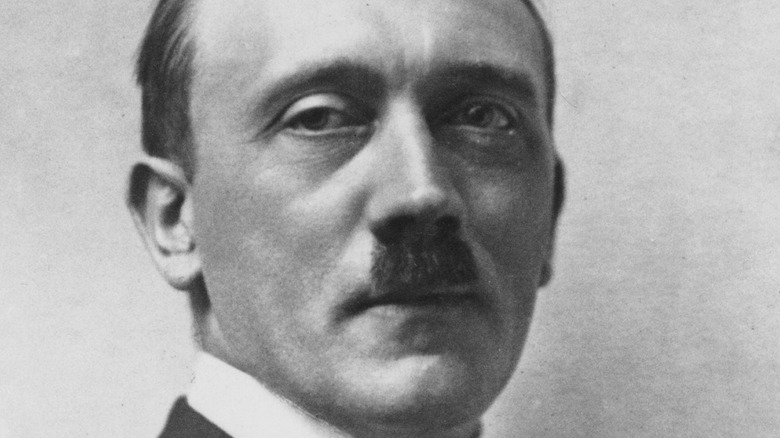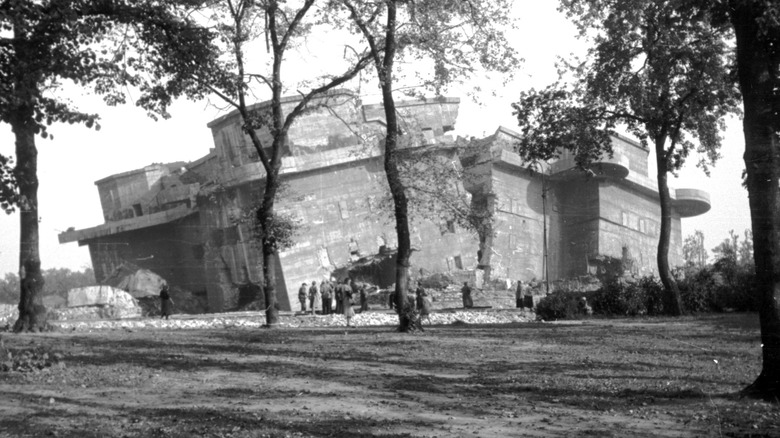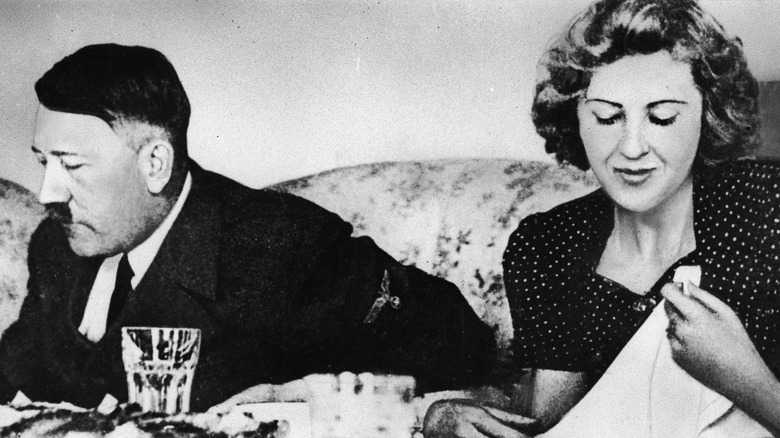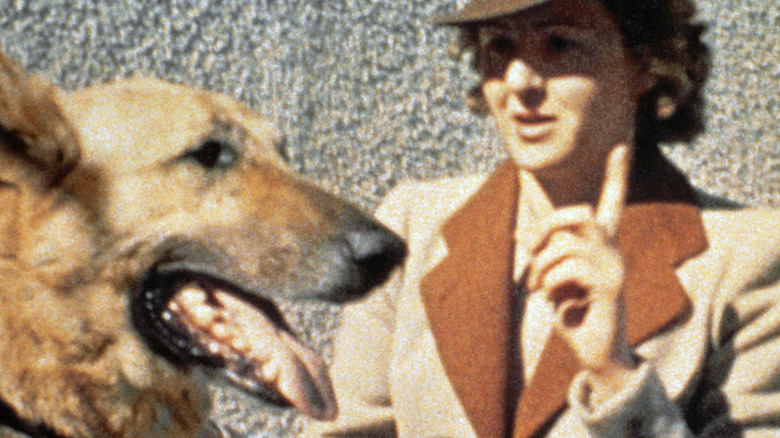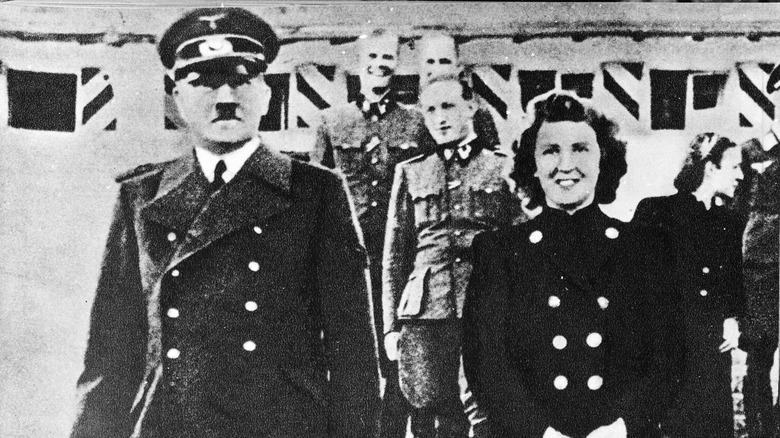The Final Moments Of Adolf Hitler
By spring of 1945, Russia's Red Army was converging on Berlin, and Adolf Hitler, with his long-time mistress Eva Braun, had retreated to the so-called Führerbunker, an above- and-below-ground complex near the Reich Chancellery, the center of Nazi government in the German capital. In the Führerbunker along with Hitler was Nazi chief propagandist Joseph Goebbels, and Hitler's own private secretary, Martin Bormann, a long-time member of Hitler's inner circle, the man who controlled access to the Führer. Hitler, Braun, and Goebbels' wife and family — who were also in hiding — would all kill themselves just hours before the fall of Berlin. It was believed for a time that Bormann was among the numerous Nazis who managed to escape to South America. He died from stomach cancer in Paraguay some 14 years later, per the Independent. Britannica, however, reports that his skeleton was discovered during construction in West Berlin in 1972; DNA analysis in 1998 confirmed that the remains were Bormann.
With those deaths and the subsequent Allied victory, the Third Reich was no more, and the Second World War, in Europe at least, had mercifully come to a close. Thanks in part to the book "Hitler's Last Day: Minute by Minute" by Jonathan Mayo and Emma Craigie, the final hours of Hitler's life are recorded in chilling detail. As the story unfolded, the fate of those hidden with Hitler became clear, and one of history's darkest moments was resolved as Adolf Hitler — among mankind's most brutal and malicious dictators — came to his end.
If you or anyone you know is having suicidal thoughts, please call the National Suicide Prevention Lifeline at 1-800-273-TALK (8255).
Hitler lived in the Führerbunker for months before he died
Adolf Hitler was living in the Führerbunker, about 30 feet underground, for months before he made the final decision to end his life. Construction on the Führerbunker began in 1936, before war even broke out. It was finished in two stages, the last one concluded in 1944. The Führerbunker was two connected shelters, and it was finely appointed with expensive rugs and art, among other luxuries. Soon life in the bunker became chaotic, and addicted to opiates and living with Parkinson's disease, Hitler's health only worsened; so, too, did the Reich's prospects of winning the war. (The above-ground portion of the Führerbunker, destroyed by the Allies, is pictured above.)
In total, Hitler would spend 105 days living underground. The last time Hitler ever saw the sunshine was on April 20, the Führer's 56th birthday. After that point, he never emerged from the Führerbunker again. With news that Italian fascist dictator and Hitler ally, Benito Mussolini, was captured and killed by Allied forces, and with many of Hitler's inner circle turning on him, it was clear the war was lost and the Third Reich was finished. Supplies and munitions were running low for the German army, and the Soviets were expected to take Berlin at any moment. Hitler had one final task to complete before he carried out his final act, though, as Sky History notes.
Hitler and Braun married before they died
Only a matter of days before Adolf Hitler and Eva Braun would end their lives, the couple decided to get married. Braun met Hitler in 1929 when she was just 17 years old. Shortly thereafter the two became lovers. In 1945, she returned to Berlin to join Hitler in the Führerbunker, where she would live out her final days. The marriage ceremony between Hitler and Braun took place underground. It was a small affair. The officiant, Walter Wagner, was described as an attorney and notary, as well as a devout Nazi. Apparently he'd never met Hitler before the wedding ceremony. In the civil ceremony both pledged they were of pure Aryan blood, in keeping with Hitler's philosophy of racial superiority and of a master race. The bwedding was followed by a somber reception. Once married, Hitler dictated his final will and testament. (Braun is pictured with Hitler above.)
The following day, Hitler received an update on how the German army was faring. It would only be a matter of hours before the Red Army took control of Berlin. A teenage Hitler Youth courier named Armin Lehmann, who was in the Führerbunker in those final hours but survived, described Hitler like a ghost, staring ahead, lost in thought (via Sky History). When a mortar struck the ground above the bunker, Lehrmann later recalled, "Dirt and mortar trickled down on us, but he made no attempt to brush it off. He looked so much more unhealthy than 10 days earlier at his birthday reception ... It looked like he was suffering from jaundice. His face was sallow," Lehrmann said.
Hitler also poisoned his dog
Along with Hitler, Braun, and other members of the Nazi brass in the Führerbunker was Hitler's dog, a German shepherd named Blondi (pictured above, with Braun). Blondi was given to Hitler in 1941 by his private secretary Martin Bormann and it's said that Hitler and the dog were very close — according to some, the relationship was closer than Hitler was even with Braun. As Express reports, quoting the 2006 book "The Lost Life of Eva Braun," "he was more publicly demonstrative to his dog, hugging and kissing her." Hitler's affection for dogs played into Nazi propaganda that attempted to portray him as an animal lover.
According to Hitler and Braun's suicide pact, the two would die side by side. Braun would ingest cyanide, and Hitler would both ingest cyanide and shoot himself in the temple. Braun eschewed adding a gunshot to her suicide by cyanide; "I want to be a beautiful corpse," she said.
As Hitler said in his will (via the Mirror) "I and my wife choose death to escape the shame of deposal and surrender. It is our will that our bodies be burned immediately." First, though, Blondi would also die, to test the effectiveness of the cyanide capsule one day prior to Hitler and Braun's own suicide. One of only two survivors from the Führerbunker later recalled the death of the dog affecting those in the underground bomb shelter more so than the death of Eva Braun (via Express).
Hitler and Eva Braun died one day later
On April 30, 1945, and with Allied forces advancing, Adolf Hitler decided the time had come for himself and his wife to follow through on their plan to kill themselves, rather than face possible capture by Allied forces. Around noon on that day, Hitler told Secretary Bormann (via the Mirror), "The time has come. Fraulein Braun and I will end our lives this afternoon." After eating his final meal of spaghetti and salad, Hitler met with Goebbels, who urged the despot to reconsider and to escape, instead. Hitler would not be moved. "You know my decision. I'm not going to change it," Hitler said.
At that point, Hitler and Braun entered their private chambers for the final time. A shot rang out through the bunker, and Hitler was later discovered, bloodied and slumped over, with Braun by his side. Their bodies were cremated in the Chancellery garden, per Hitler's wishes, as History notes. Also in keeping with Hitler's final will and testament, Goebbels was named Chancellor in Hitler's stead. But Goebbels, too, would die by suicide, along with his family, according to the Mirror. As predicted, Berlin fell to the Allies with an unconditional surrender from the Germans eight days later, and one of the worst moments in world history had finally come to a close.
